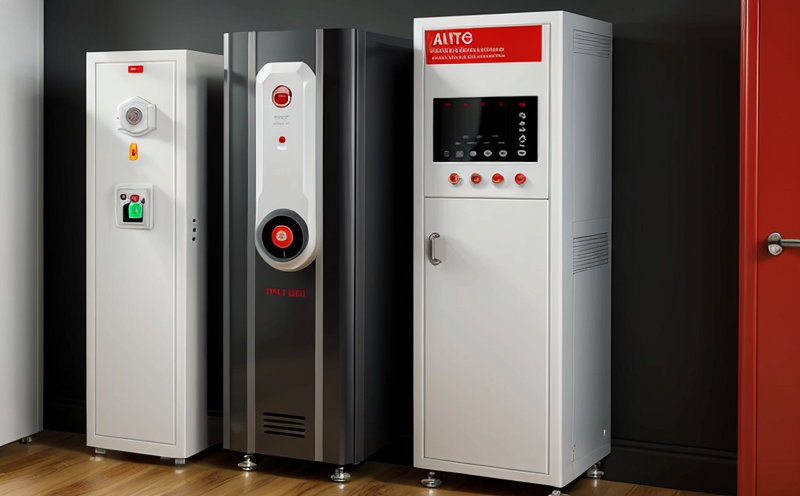Detector Placement and Coverage Efficiency Testing
The critical role of fire detection and alarm devices in ensuring safety cannot be overstated. Detector placement and coverage efficiency testing are essential procedures that ensure these systems function optimally, providing early warnings during a fire event. This service is pivotal for quality managers, compliance officers, R&D engineers, and procurement professionals who aim to safeguard facilities against potential hazards.
The process involves meticulous analysis of the spatial arrangement of detectors within a given area. It evaluates whether the placement of these devices ensures comprehensive coverage, thereby minimizing blind spots or areas where fire could spread undetected. The efficiency of such systems is paramount in preventing casualties and property damage during emergencies.
Effective detector placement requires an understanding of various factors including room dimensions, occupancy levels, potential ignition sources, and material composition. Compliance with international standards like ISO 19654:2020 and EN 54-7 ensures that the testing methodologies are robust and aligned with global best practices.
During this testing process, we employ sophisticated simulation techniques to assess how different configurations impact the overall performance of fire detection systems. This includes evaluating factors such as sensor sensitivity, response time, and integration with existing fire safety infrastructure. The goal is to achieve optimal coverage that maximizes early warning capabilities while minimizing false alarms.
Our team uses advanced software tools and real-world data to simulate various scenarios, ensuring that every aspect of the system’s performance is thoroughly examined. This approach allows us to identify any potential gaps or inefficiencies in current setups, providing actionable insights for continuous improvement.
In summary, detector placement and coverage efficiency testing are crucial steps towards enhancing fire safety measures. By adhering to strict protocols and leveraging cutting-edge technology, we ensure that your facilities meet the highest standards of protection. This service not only contributes to regulatory compliance but also plays a vital role in safeguarding lives and assets.
Scope and Methodology
The scope of detector placement and coverage efficiency testing encompasses several key areas. It involves assessing the spatial distribution of fire detection devices to ensure they are strategically placed for maximum effectiveness. This includes evaluating the distance between detectors, their angle of coverage, and the overall layout within a given area.
Our methodology follows established international standards such as ISO 19654:2020 and EN 54-7, which provide comprehensive guidelines on how to conduct these tests. We begin by conducting an initial survey of the premises to gather essential information about its layout, occupancy rates, and fire risks. This data is crucial for tailoring our testing approach to specific needs.
Once we have gathered all necessary details, we proceed with a detailed simulation process. Using specialized software, we model various scenarios that could occur during a fire event. These simulations help us determine whether the current detector placement provides adequate coverage and responsiveness. We also analyze how different configurations might affect overall system performance.
In addition to simulating real-world conditions, we conduct practical tests involving actual devices installed in mock environments. This allows us to observe their behavior under controlled circumstances, providing valuable insights into their reliability and effectiveness. Finally, based on our findings, we provide detailed reports outlining recommendations for optimizing detector placement and coverage efficiency.
The methodology is designed not only to meet regulatory requirements but also to enhance the overall safety of your premises by identifying potential weaknesses in existing systems. Through this comprehensive approach, we ensure that every aspect of fire detection devices is thoroughly evaluated and optimized.
Industry Applications
- Hospitality industry: Ensuring guest safety through optimal placement in corridors, patient rooms, and public areas.
- Manufacturing facilities: Protecting sensitive equipment from potential fire hazards while safeguarding workers' health.
- Data centers: Minimizing downtime by preventing fires that could disrupt critical operations.
- Residential complexes: Providing peace of mind to residents with reliable early warning systems.
- Retail spaces: Reducing liability risks associated with uncontrolled fires in high-traffic areas.
- Offices: Enhancing workplace safety and compliance with local regulations.
The applications are vast, covering various sectors where fire safety is a priority. By implementing our testing services, you can ensure that your facilities meet the highest standards of protection against fire risks.
Customer Impact and Satisfaction
Implementing detector placement and coverage efficiency testing brings numerous benefits to customers. It enhances overall safety by ensuring that every nook and cranny within a premise is adequately protected against fire risks. This translates into reduced insurance premiums, lower liability costs, and improved reputation among stakeholders.
For quality managers and compliance officers, this service provides valuable data for auditing purposes, helping them stay compliant with relevant regulations. R&D engineers gain insights into system performance under various conditions, which can lead to innovations in fire safety technology. Procurement teams benefit from recommendations that improve long-term cost-effectiveness by optimizing current setups.
Customer satisfaction is high as they see tangible improvements in their fire safety measures. Regular reviews and adjustments based on our findings ensure continuous enhancement of protection levels. This proactive approach fosters trust between clients and service providers, leading to sustained partnerships built on mutual respect and shared goals.





